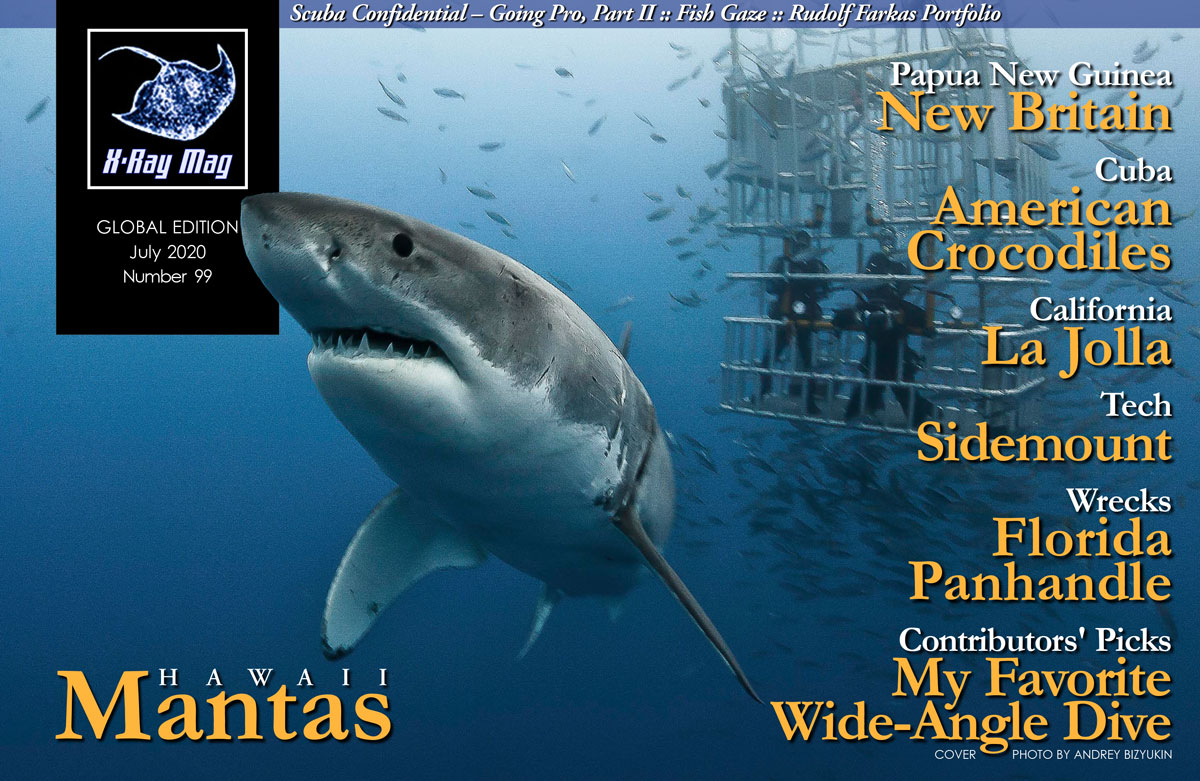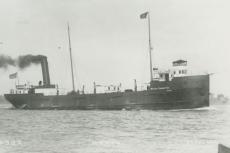Diving with giant manta rays is always an exhilarating experience. Being in the water with these large intelligent animals is always humbling. They are also spectacular subjects for photography and video. Kona Hawaii in the United States is famous for night diving and snorkeling with the local mantas. This can produce stunning images, but it does take some special techniques.
Contributed by
Factfile
Larry Cohen and Olga Torrey are well-traveled and published underwater photographers based in New York City, USA. They offer underwater photography courses and presentations to dive shops, clubs and events. For more information, please visit: liquidimagesuw.com and fitimage.nyc.
The manta rays in Kona waters belong to the Mobula alfredi species. These are reef mantas and, unlike other species, these mantas do not migrate. They spend their lives in the coastal waters of Hawaii. This is the second largest species of mantas and can have a fin span of up to 5.5m (18ft).
Just like all manta rays, they are filter feeders. Mantas swim with their mouth open and take in large amounts of zooplankton. At night, light attracts the zooplankton, and the plankton attracts the mantas.
There are many operations that run manta night diving and snorkeling trips. The boats are usually crowded with divers and many go to the same location. This is a follow-the-leader group dive. Even if you normally avoid this kind of diving, it is worth putting up with the crowd to get fascinating images. Both Aquatic Life Divers and Jack’s Diving Locker do not overbook, and both have comfortable boats with room for photo gear.
Diving
The dive operator deploys a large light on the sea bottom, pointing up. Usually, there are floats with lights pointing down. Snorkelers hold on to the floats to watch the show from the surface. With all this light and the crowd, it is like doing a night dive in Times Square in New York City!
The dive guides position the hordes of divers in a circle around the large light on the sandy sea bottom. The guides want all the divers to have negative buoyancy and sit or kneel down on the sand. Sitting on the sea floor with a large group, while watching the mantas dance in front of you, feels like being at a ballet show instead of being on a dive. For imaging, the trick is to get one of the “dancers” to leave the “stage” and come in close to you.
Lighting tips
It is important to get as close to the large light on the sea bottom as possible. Your lighting should consist of a strobe on each side of your housing, with a video light next to each strobe, using triple ball clamps. The video lights should be pointed at the surface. This will attract plankton over your head, so the mantas will leave the stage and come in close enough to be photographed. A focus light just above your port will be helpful. It is best to use a focus light that has a sensor that will turn off when your strobes fire.
The manta movements will be silting out the bottom, and with all the plankton in the water column, visibility will be limited. It is best to angle your strobe heads outward and use the soft edge to light the subject. Wide-angle lenses are best since it is unlikely you will be close enough to use a fisheye.
Beach dive
Some Kona locals know sites where you can snorkel with mantas off the beach. This is a very different activity, and these locations are not crowded. Your light setup should be the same as the manta dive. In this case, only your light brings in the plankton, so the mantas will be much closer. The water column could be milky because of the sand from the beach blowing into the water. For these reasons, using a fisheye lens is best.
Instead of feeling like you are at the ballet, this is like being in the mosh pit at the famous New York City punk music club, CBGB. The only difference is, instead of being body-slammed by a skinny, spiked-haired punk rocker, you are being body-slammed by a 1,400kg (1.4-ton) fish. This does hurt a little but is a unique experience. Try to protect your soft body parts and your camera gear. Getting slammed this way could cause a housing or light to flood.
If you are visiting Kona, a night manta dive or snorkel is not to be missed, even if you usually avoid “follow-me” group dives. Make sure you bring your camera, and by using a few simple techniques, you will be able to get close to these magnificent creatures and capture stunning images. ■
Special thanks go to Charlie Fasano, the Hawaii regional director of the Shark Research Institute (sharks.org/hawaii-tiger-sharks-expedition), Aquatic Life Divers (aquaticlifedivers.com) and Jack’s Diving Locker (jacksdivinglocker.com).
SOURCES: MANTARAY-WORLD.COM
















































